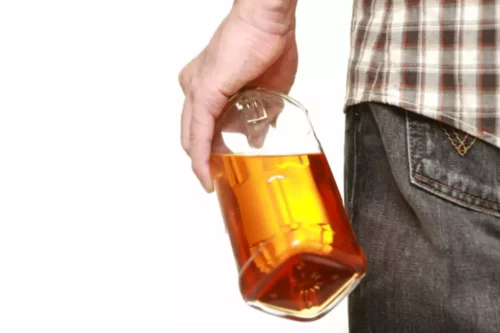How to Figure Out if Moderate Drinking Is Too Risky for You

The definition of moderate drinking is something of a balancing act. Moderate drinking sits at the point at which the health benefits of alcohol clearly outweigh the risks. This is all keeping in mind that moderate alcohol consumption and moderation management programs aren’t appropriate for those groups we already listed above.
Effects of long-term alcohol use
Another study found that it is widely assumed that light or moderate drinking is the safest way to to drink alcohol. “Non‐drinkers, both ex‐drinkers and lifelong teetotalers, consistently show an increased prevalence of conditions likely to increase morbidity and mortality compared with occasional or light drinkers. In addition, regular light drinkers tend to have characteristics extremely advantageous to health,” the authors wrote.
- These calories add up — and getting more calories than you need can make it harder to stay at a healthy weight.
- In contrast to prior studies that enrolled participants in recovery for severe AUD, our study participants had mild-to-moderate AUD.
- The numerators are the number of participants who used the Tula app in a particular study week while the denominators are the number of participants actively enrolled in the study during that week.
- The stratification variables and the baseline values of the outcomes were included as covariates, with a separate model for each primary outcome.
- Patient-reported QOL was measured using the four global physical health and four global mental health items in the Patient-Reported Outcome Measurement Information System (PROMIS) global health short form (SF10 ver.1.2)36.
- By purchasing a subscription you are helping to ensure the future of impactful stories about the discoveries and ideas shaping our world today.
Get the latest in health news delivered to your inbox!

Learn more about the results of some large prospective cohort studies of alcohol consumption and cardiovascular disease. Drinking moderately if you’re otherwise healthy may be a risk you’re willing to take. But heavy drinking carries a much higher risk even for those without other health concerns. Be sure to ask your healthcare professional about what’s right for your health and safety. Excessive alcohol use can harm people who drink and those around them. You and your community can take steps to improve everyone’s health and quality of life.
document.getElementsByTagName(‘head’) .appendChild(rs);
Alcohol consumption has been linked to cancers of the breast, colon and rectum, liver, esophagus, voice box, throat, mouth, and probably the pancreas, according to the American Cancer Society. Participants reported biological sex and their AUD severity https://ecosoberhouse.com/ (mild or moderate; those with severe AUD were excluded) in the screening survey, which was used as strata for randomization. Participants reported additional demographics, including age, race/ethnicity, education, and income in the baseline survey.

For many Americans, summer is the most relaxing time of the year. Particularly when the weather is nice, millions of people around the country choose to spend the day or evening outside, enjoying the company of friends and family while lighting up the grill and having a few drinks. NIAAA research indicates that only about 2 percent of people who drink within these limits have alcohol use disorder. Decide how many days a week you’ll drink and how much you’ll drink on those days.
Do Moderation Management programs work? Benefits & Risks
The NIAAA classifies binge drinking as a pattern of drinking that brings blood alcohol concentration (BAC) to .08 g/dL. For women, this typically happens after about four drinks in two hours. Given the complexity of alcohol’s effects on the body moderate drinking and the complexity of the people who drink it, blanket recommendations about alcohol are out of the question. Because each of us has unique personal and family histories, alcohol offers each person a different spectrum of benefits and risks.
Kiluk et al.17 compared usual care to clinician-delivered CBT and to an internet-delivered program called CBT4CBT. After 12 weeks, all three arms showed reductions in substance use, with higher reductions in the clinician-delivered CBT arm and the CBT4CBT arm when compared to the usual care. However, the clinician-delivered CBT arm had a higher drop-out rate than the other two arms17. Tetrault et al.18 compared CBT4CBT to in-person treatment and found positive effects for both groups but no significant difference between them18. If you choose to drink, don’t drink more than a couple of alcoholic drinks a night. For men, moderate drinking is two “standard” drinks or less per day.
Use these tips to talk with someone about cutting back or quitting drinking. If you keep a lot of alcohol around, you may be tempted to go over the drinking limit you set for yourself when you’re at home. If you have a bad day or are feeling angry, don’t reach for a drink. Keeping track of each drink may help you drink less overall.
What Is a Standard Drink?
What follows is not a condemnation of moderate alcohol use. While many of the facts conveyed in this post may sound as though they are meant to dissuade individuals from drinking, the goal is not to pass judgment on behavior or to make the argument in favor of abstinence. When it comes to your health, drinking alcohol can be a balancing act.

A randomized trial testing digital medicine support models for mild-to-moderate alcohol use disorder
All authors read, reviewed the results, and approved the final manuscript. Sensitivity analyses are included to examine model assumptions regarding equivalence of groups at baseline, skewness of the primary outcome, and to account for differential attrition (see Supplementary Information). IQ has long been used as a measurement to understand the neurological effects of environmental toxins, including lead and arsenic. He said that recent research indicates that the loss of an IQ point in children starts to happen at exposures as low as 0.3 milligrams per liter, far below the 1.5-milligram-per-liter threshold the NTP used in its report. “With lead, mercury, and dioxin, the evidence is just as compelling as in regard to fluoride, but these conclusions are soft. And that is surprising, because, as a researcher, I would say, ‘My God, this is compelling evidence,’” Grandjean said.
